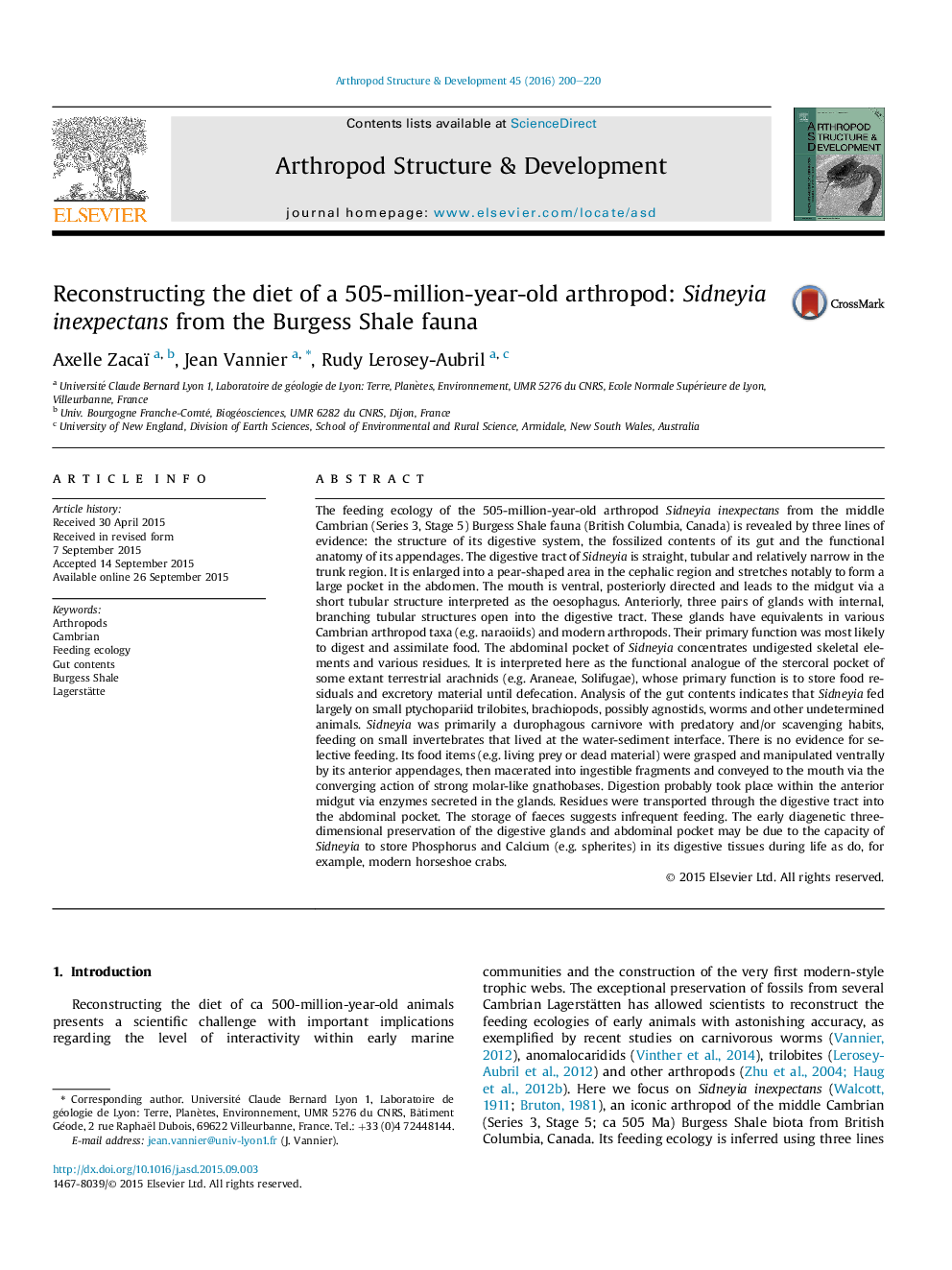| کد مقاله | کد نشریه | سال انتشار | مقاله انگلیسی | نسخه تمام متن |
|---|---|---|---|---|
| 2778497 | 1153137 | 2016 | 21 صفحه PDF | دانلود رایگان |

• The whole digestive system of the Cambrian arthropod Sidneyia inexpectans is reconstructed.
• It has 3 pairs of digestive glands and an abdominal pocket in which food remains are concentrated.
• Sidneyia fed on trilobites, brachiopods, possibly agnostids, worms and undetermined animals.
• Sidneyia was a durophagous, non-selective carnivore with predatory and/or scavenging habits.
• Its phosphatized digestive glands and abdominal pocket suggest Phosphorus and Calcium storage.
The feeding ecology of the 505-million-year-old arthropod Sidneyia inexpectans from the middle Cambrian (Series 3, Stage 5) Burgess Shale fauna (British Columbia, Canada) is revealed by three lines of evidence: the structure of its digestive system, the fossilized contents of its gut and the functional anatomy of its appendages. The digestive tract of Sidneyia is straight, tubular and relatively narrow in the trunk region. It is enlarged into a pear-shaped area in the cephalic region and stretches notably to form a large pocket in the abdomen. The mouth is ventral, posteriorly directed and leads to the midgut via a short tubular structure interpreted as the oesophagus. Anteriorly, three pairs of glands with internal, branching tubular structures open into the digestive tract. These glands have equivalents in various Cambrian arthropod taxa (e.g. naraoiids) and modern arthropods. Their primary function was most likely to digest and assimilate food. The abdominal pocket of Sidneyia concentrates undigested skeletal elements and various residues. It is interpreted here as the functional analogue of the stercoral pocket of some extant terrestrial arachnids (e.g. Araneae, Solifugae), whose primary function is to store food residuals and excretory material until defecation. Analysis of the gut contents indicates that Sidneyia fed largely on small ptychopariid trilobites, brachiopods, possibly agnostids, worms and other undetermined animals. Sidneyia was primarily a durophagous carnivore with predatory and/or scavenging habits, feeding on small invertebrates that lived at the water-sediment interface. There is no evidence for selective feeding. Its food items (e.g. living prey or dead material) were grasped and manipulated ventrally by its anterior appendages, then macerated into ingestible fragments and conveyed to the mouth via the converging action of strong molar-like gnathobases. Digestion probably took place within the anterior midgut via enzymes secreted in the glands. Residues were transported through the digestive tract into the abdominal pocket. The storage of faeces suggests infrequent feeding. The early diagenetic three-dimensional preservation of the digestive glands and abdominal pocket may be due to the capacity of Sidneyia to store Phosphorus and Calcium (e.g. spherites) in its digestive tissues during life as do, for example, modern horseshoe crabs.
Journal: Arthropod Structure & Development - Volume 45, Issue 2, March 2016, Pages 200–220